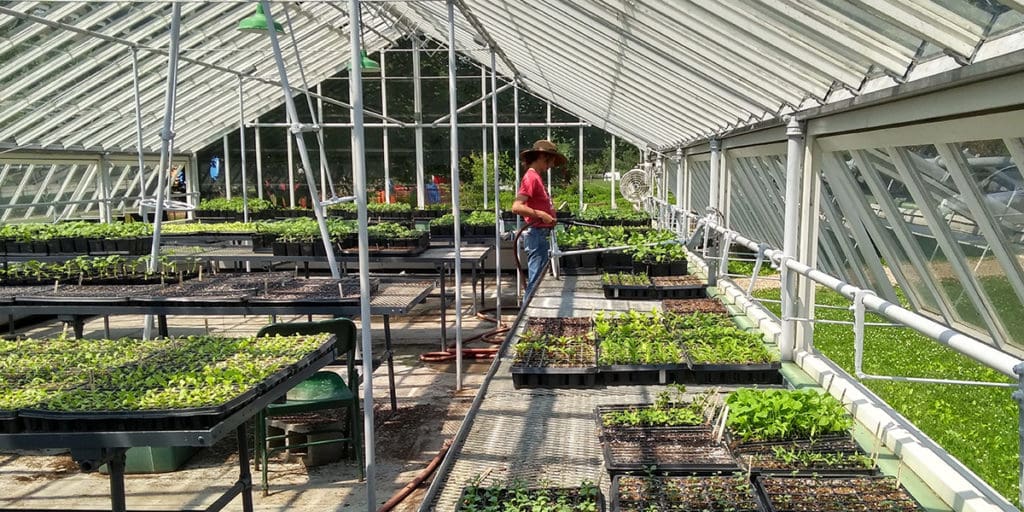Growing Fields
Queens Farm is always learning, observing, and thinking outside the box to see how we can use our land to grow more food! Queens Farm grows 200 varieties of crops in our fields, with a strong focus on annual vegetables. The farm produces perennial fruit, perennial vegetables, flowers, herbs, and pollinator supporting plants. We offer a wide assortment of culturally diverse produce throughout the 9-month growing cycle.

Queens Farm produce is Certified Naturally Grown.
Regenerative Agricultural Practices
Regenerative agriculture is the practice of growing food in a way that balances environmental stewardship, community development and economic viability. Regenerative growing practices do a phenomenal job in keeping the ecology of Queens Farm in balance. Using organic growing methods, allows Queens Farm to further its regenerative agricultural practices to ensure better future land use. Under organic agriculture the farm would be able to use organic pesticides and sprays, with regenerative agriculture the farm gives way to nature to provide its own solutions and protection. Through the interplay of different systems working together, we are able to keep pest and disease pressure to a minimum while building healthier soil and plants. This system leads to the farm continuously becoming a stronger and more productive ecosystem.
This system draws from similar practices in the farm’s agricultural history where in colonial times, farm implements powered by animals were used to till the land and then worked by hand by the farmers. Today at the Queens Farm, a tractor is used to prepare the planting beds for cultivation in spring, then relies on hand tools, simple machinery, and the power and dedication of a farm crew to tend to the plants from seed to harvest. Other regenerative practices implemented at Queens Farm are crop rotation, cover crops, biodegradable mulch, intercropping, and pollinator- friendly perennial borders. Learn more about each practice implemented at the Queens Farm.
Growing practices Read More »
Crop Rotation Read More »
Intercropping Read More »
Cover crops Read More »
Biodegradable mulch Read More »
Pollinator-friendly perennial borders: Read More »
